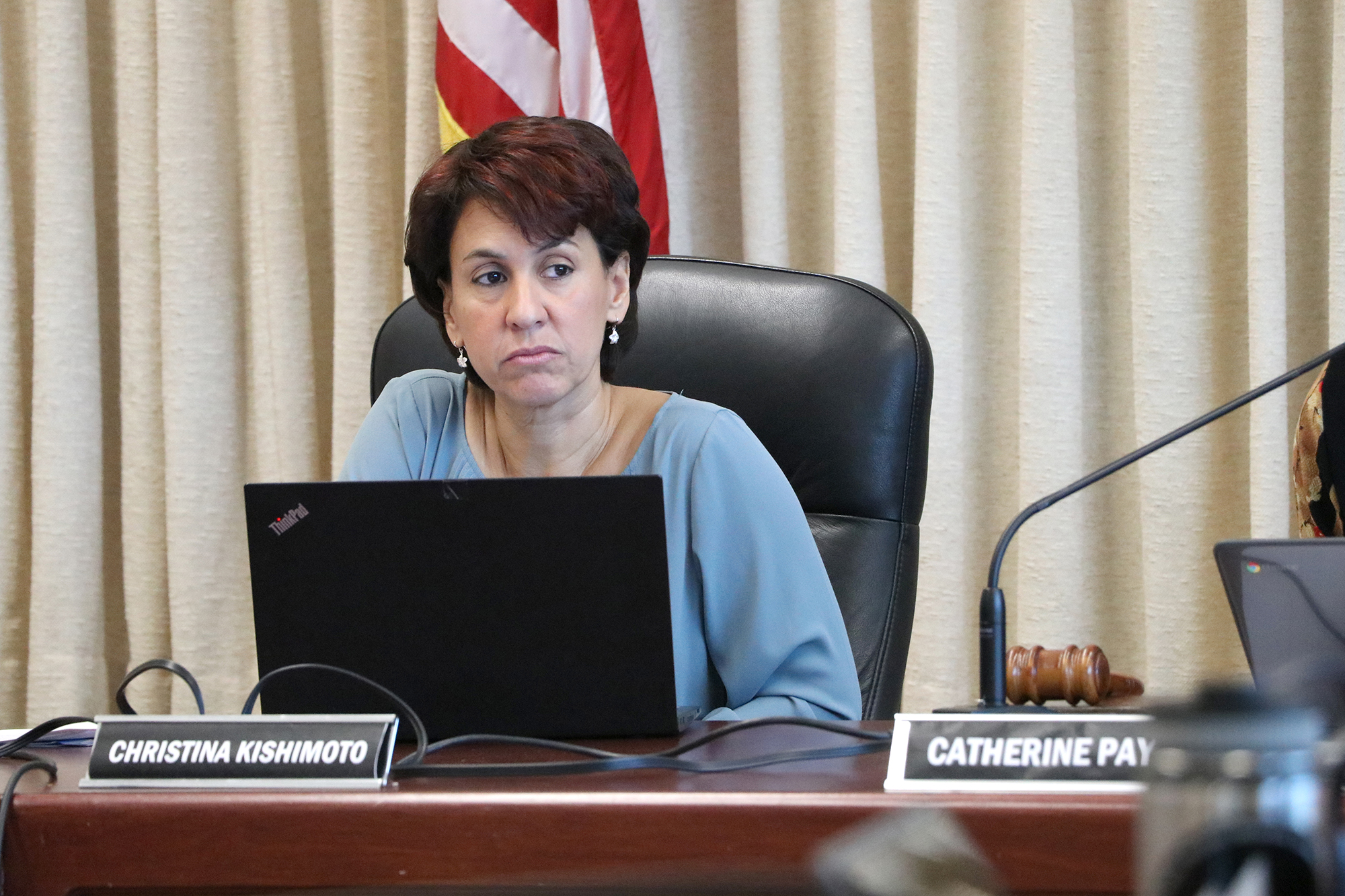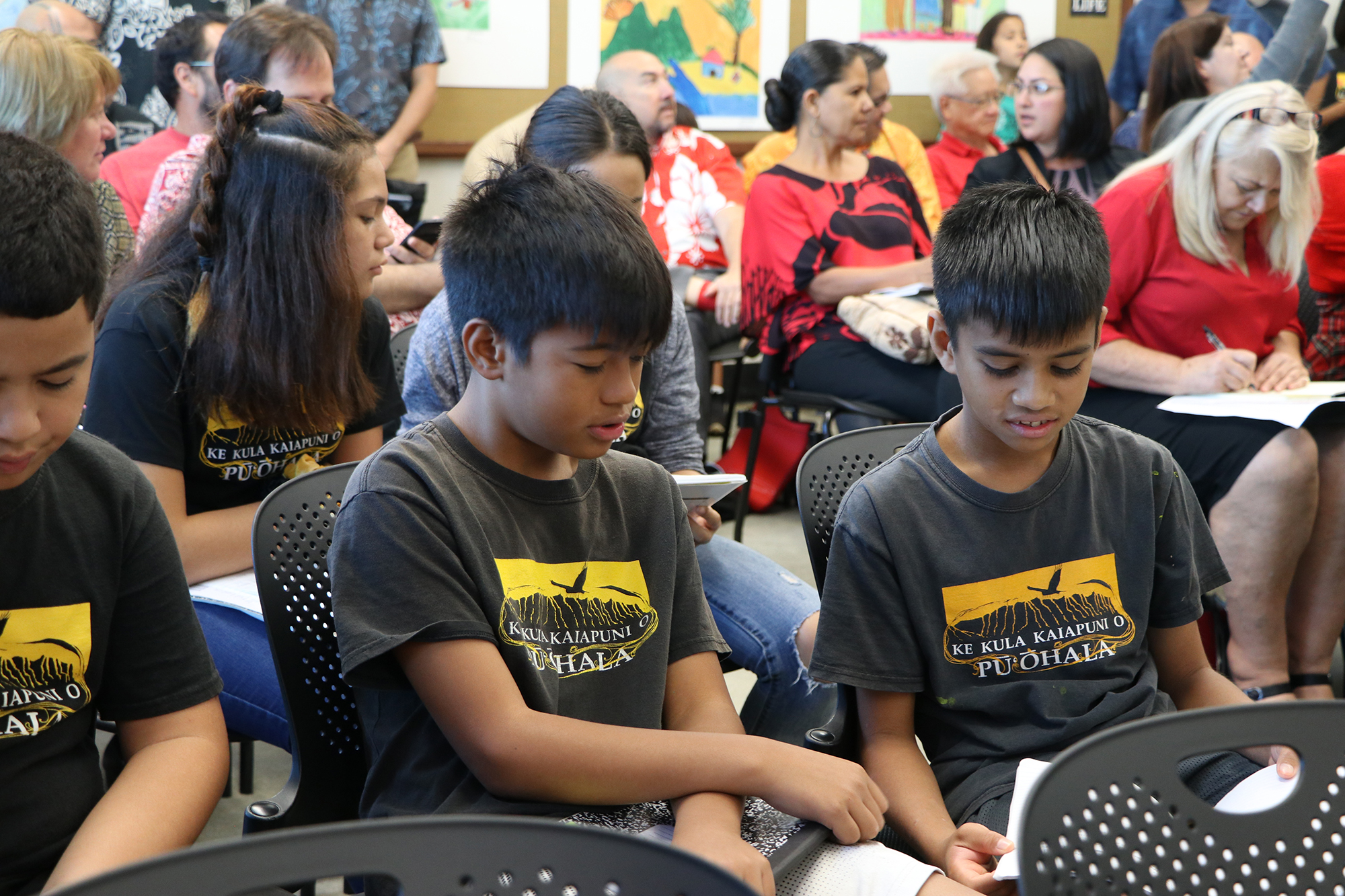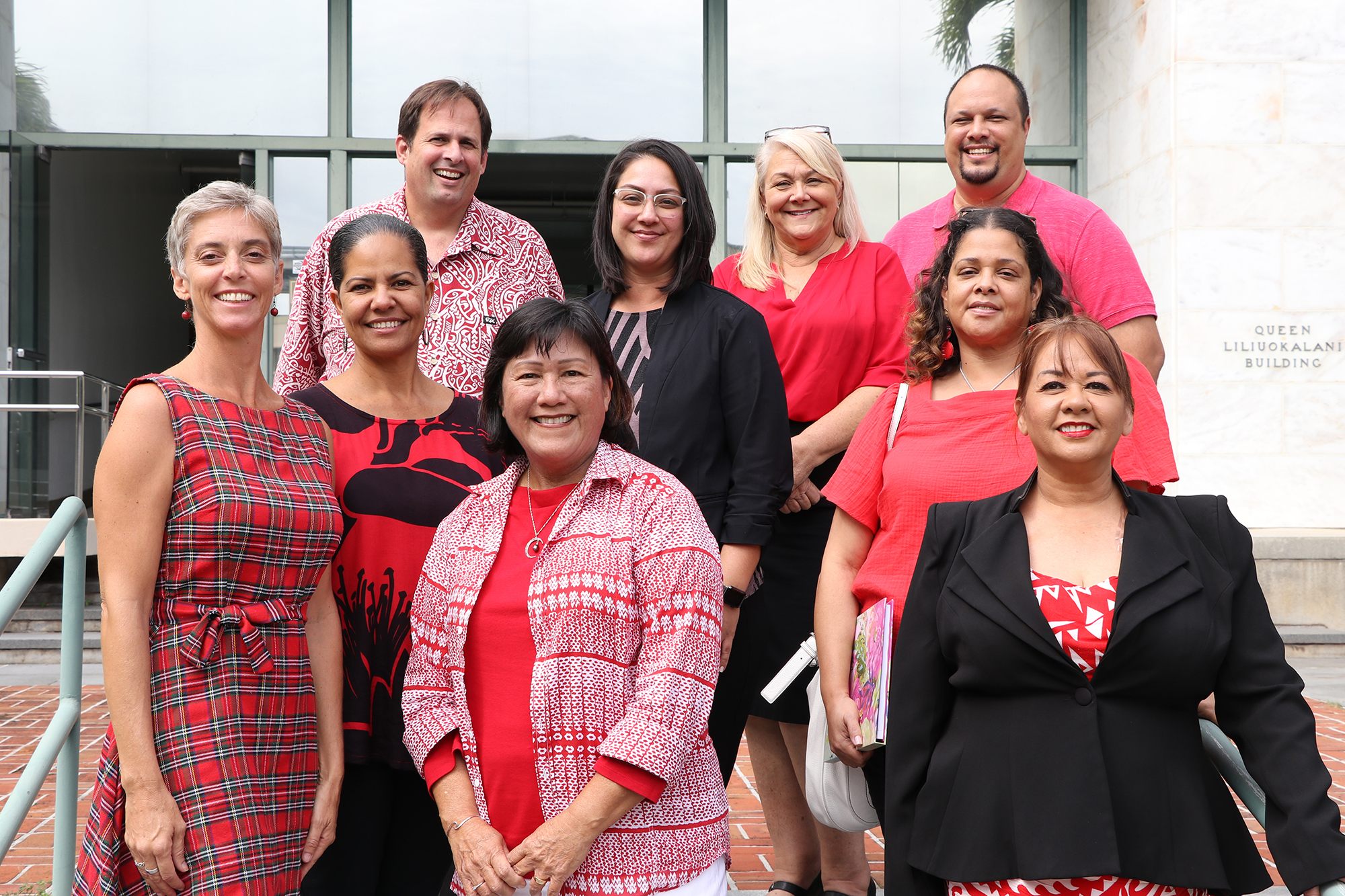Nearly 4,000 educators will qualify for extra pay
Posted: December 6, 2019
The Board of Education voted Thursday to approve paying up to $10,000 a year in shortage differentials starting Jan. 7 to thousands of educators in three areas with the worst shortages, while the schools superintendent said she wants to see across-the-board pay increases and will roll out the second phase of a plan to attract and retain more teachers next month.
Nearly 4,000 educators will qualify for $14.7 million worth of extra pay for the remainder of this school year, pro-rated for the second semester, boosting their paychecks starting in the spring.
- About 2,100 educators in 13 complex areas will receive hard-to-staff differentials of between $3,000 and $8,000 a year, depending on the severity of the shortages in their complexes.
- Roughly 1,700 classroom special education teachers will receive $10,000 annual shortage differentials.
- More than 100 Hawaiian language immersion teachers who are deemed fluent in Hawaiian will qualify for $8,000 yearly differentials.
The board took the unprecedented step of approving differentials in the middle of a contract and during the school year to influence educators before their Spring 2020 transfer period, when they can change schools and worksites for SY 2020-21. Hawaii’s SpEd and hard-to-staff differentials will be the highest in the country. Read more details about the differentials.
Read HSTA’s FAQs about the shortage differentials.
Gov. David Ige and DOE Schools Superintendent Christina Kishimoto have committed to funding the differentials for the rest of this school year with existing funds, while Ige will submit the $30.4 million request to the Legislature to fund the differentials for school year 2020-2021.
Educators and students packed the BOE board room Thursday to testify in favor of the proposals and nearly 300 people turned in written testimony backing the plans.
“Today is a momentous day,” Osa Tui Jr., the registrar at McKinley High and HSTA’s vice president told the board.
“People are saying ‘I’m now considering not retiring right away,’’ Tui said. “Our students need these people to stay.”
HSTA President Corey Rosenlee said, “We have to do something. HSTA supports both phase one and phase two of this plan, which will be coming in front of this board in January.”

Second phase addressing compression to come in January
Kishimoto said she’s working with HSTA and many other stakeholders as they plan a “multiple-phased approach” to end the teacher shortage crisis. She plans to announce a second phase of the effort in mid-January.
“I am looking to have a very doable proposal that is very hard to argue against,” she told the board.
“It’s not just about the money that comes from salary, but there are also other benefits, so we’ve had multiple partners we’ve been working with as well which are not part of this phase-one disclosure. Around other things like tuition access, housing and other things that we’re looking at,” Kishimoto added.
“The conversation that I hope to be leading with the board, is I would like pay increases across-the-board for all the teachers that are competitive and adjusted for cost of living,” said Kishimoto, who also plans to release the results of the DOE’s teacher pay study next month.
“What do we do with the rest of our teachers where we have a compression issue? We have lots of things to get to,” Kishimoto said, referring to the more than 6,000 HSTA members whose pay stagnated during economic hard times.
Thursday’s vote was “just a first step,” according to BOE member Bruce Voss. “While this situation is serious with these shortages, it’s equally as serious, the loss of experienced teachers and we need to address the compression in our pay scale. And we look forward to that discussion in January, so this can go to the Legislature as a comprehensive package next year.”
On Tuesday, at a news conference announcing the first phase of the effort, Gov. David Ige told reporters, “This is the first phase of a multi-phase (effort). We are looking at what is required to end the teacher shortage here in the islands. And we felt that this is the first step. We believe that this represents the highest priority areas that we should be working hard to fill first. Obviously there will be subsequent action that will be required to comprehensively address the teacher shortage.” Read more about the news conference and details on the differentials.
Board of Education Chair Catherine Payne, a retired principal and longtime educator, said, “I think we have to have some trust in our governor and in our legislators that they understand the critical nature of all of this.”
“Doing nothing is certainly going to cause us to continue the decline,” Payne added.
Brian De Lima, the BOE vice chair, said, “We need to recognize that this is part of an overall plan to compensate teachers in a way that we can have highly effective teachers in each and every classroom.”

Students, educators testify in favor of shortage differentials
Puuwai Kaeo, a 6th grader at Ke Kula Kai Puohala Elementary in Kaneohe, spoke in favor of $8,000 differentials for his Hawaiian language immersion teachers.
“These wonderful Hawaiian immersion teachers, they work so hard for us,” Kaeo said, praising his teacher who “does not take a rest. I feel like they deserve a lot more than they give us. I would want to cry if I had to work as hard as them,” he said, prompting laughter from the packed auditorium. “I just can’t stand to watch them work so hard and get paid so little.”
Leinaala Vedder, a Hawaiian language immersion teacher at Paia Elementary on Maui, told the board “Every day of my professional career has been spent translating English into Hawaiian and Hawaiian into English in every subject and integrating cultural knowledge with standards-based curriculum.”
“Please support this item,” Vedder said, “For us, and for our haumana (students), so that we can continue our language, which is the official language of this state.”
Leilani Roberts, a science teacher at Waianae Intermediate, said many educators recruited from outside the Leeward district or from out of state leave within a year or two because of financial challenges and difficulty adjusting to the local culture and challenges facing students along Oahu’s Waianae Coast. All teachers in the Nanakuli and Waianae complexes will be eligible for $8,000 differentials, a $5,000 increase from their current $3,000 differentials.
“With a plethora of untrained and inexperienced educators hired to fill these positions, gaps in education become visible and affect learners’ ability to succeed in college and career readiness,” Roberts said.
Momi Vincent has spent 34 years at the DOE, 24 of them at Kaumana Elementary in Hilo, where she is a special education teacher.
As a veteran, she said she constantly has to spend extra time helping inexperienced SpEd educators.
“I focus on my children first, however, outside of the classroom and sometimes any time I can eke out recess and lunches, I’m working for the teacher who has been hired with no experience, and that’s very taxing for all of us,” she told the BOE.
Julia Fernandez, is a preschool SpEd teacher at Mokulele Elementary on Oahu, where she says she “serves Air Force babies.”
“Two teachers at my school are resigning. One this Friday and the other at the end of January,” Fernandez told the board during tearful testimony. “They leave behind about 15 students that are going to be impacted and they’re very high-needs cases. So they’re going to be impacted along with the rest of the qualified teachers who are going to have to take over the IEPs and such.”
“It worries me to juggle my classroom and my duties as well as making sure that they’re getting taken care of,” Fernandez said.
The DOE says about 16 percent of SpED positions are filled by unqualified teachers.
A special note for teachers employed at public charter schools: the shortage differentials are being initiated and implemented by the DOE. Charter school teachers are not employed by the DOE; they are employed by their specific charter school. Each charter school governing board would have to make a similar decision to the BOE to implement shortage differentials for their educators. The HSTA will be asking about the possibility of securing additional funding to allow charter schools to implement similar adjustments. In addition, at the Dec. 5 BOE meeting, the superintendent committed to help secure the funding for charter teachers.
DOE to collect data to justify extra pay to targeted shortage areas
Kishimoto said the DOE will collect five measures in a dashboard to sharing with the board to look at to measure the impact of the differentials:
- Vacancies and percentage of positions filled with licensed teachers
- Transfers to SPED positions
- Recruitment of new teachers
- Rentention/turnover rate at differential schools with differentials
- Differentials that are taken by certified teachers moving into these teaching lines
Kishimoto and Payne pledged to fund the differentials from exiting DOE money if state lawmakers do not fund it for next school year.
“If we have to take money from our budget,” Payne the BOE chair said, “it will not come from school-level programs, it will come from state office restrictions, it will come from salary savings, it will come from support services at the highest level but not affecting the school funding.”
Hundreds of vacancies across the state create salary savings. When the DOE hires substitutes who are paid about $160 a day, the cost to taxpayers for a full year is close to $30,000, much less than the average pay of $68,000 for qualified teachers.
HSTA’s campaign to end the teacher shortage crisis
These proposals are a positive step forward in part of the HSTA’s five-year plan to end the statewide teacher shortage crisis. The HSTA’s wide-ranging plans include:
- Recruiting community supporters to fund college tuition for students who commit to teaching in Hawaii’s public schools for three to five years.
- Asking lawmakers to expand the “Grow Our Own Teachers” initiative which pays for tuition for educational assistants and others interested in studying to become teachers.
- Working with developers and government to create affordable rentals for teachers and dedicated teacher housing.
- Working with financial companies to create loan products that offer zero percent down and no mortgage insurance to help educators buy homes in the islands.
- Expanding HSTA’s professional development courses and offering more of them for free starting this summer.
More details about these and other efforts will be announced in the coming months.

